Federal Judiciary And The US Supreme Court
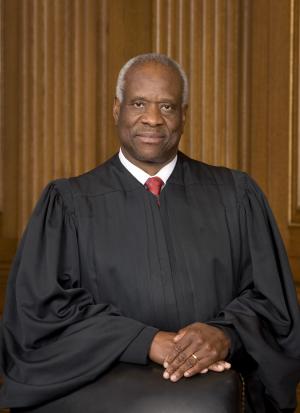
Living in one of the most developed countries in the world requires a full understanding of its law and resultant administration. The Federal Judiciary and The US Supreme Court quiz below shades more light on the subject.
- 1.
Explain how Robert Bork affected the process of choosing a Supreme Court Justice and how this impact might affect the next justice considered for appointment.
- 2.
The Framers created the national judiciary in what Article of the Constitution?
- A.
Article I
- B.
Article III
- C.
Article II
- D.
Article IV
Correct Answer
B. Article IIIExplanation
The correct answer is Article III. The national judiciary was created by the Framers in Article III of the Constitution. This article establishes the Supreme Court as well as gives Congress the power to create lower federal courts. It outlines the jurisdiction and powers of the judicial branch, ensuring its independence and providing a framework for the interpretation and application of the law.Rate this question:
-
- 3.
Most cases heard by the Supreme Court are...
- A.
Appeals Cases
- B.
Concurrent Cases
- C.
Exclusive Cases
- D.
Original Cases
Correct Answer
A. Appeals CasesExplanation
The correct answer is "Appeals Cases". This means that the majority of the cases heard by the Supreme Court are cases that have been appealed from lower courts. The Supreme Court primarily functions as an appellate court, reviewing decisions made by lower courts to ensure they are consistent with the Constitution. This explanation is supported by the fact that the other options, such as Concurrent Cases, Exclusive Cases, or Original Cases, do not accurately describe the types of cases that are typically heard by the Supreme Court.Rate this question:
-
- 4.
Name that Justice:
Correct Answer
Thomas - 5.
Name that Justice:
Correct Answer
Roberts - 6.
What is the last name of the Chief Justice?
Correct Answer
RobertsExplanation
The last name of the Chief Justice is Roberts.Rate this question:
- 7.
How long does a Supreme Court justice serve?
- A.
6 years, the same as a senator
- B.
4 years, the same as the president
- C.
Lifetime, unlike any elected official
- D.
Lifetime, but with mandatory retirement at age 80
Correct Answer
C. Lifetime, unlike any elected officialExplanation
A Supreme Court justice serves for a lifetime, unlike any elected official. This means that once appointed to the Supreme Court, a justice holds their position until they choose to retire or pass away. This lifetime appointment is intended to ensure their independence and protect them from political pressures. Unlike senators, presidents, or any other elected officials, Supreme Court justices do not have a set term limit. However, it is important to note that while there is no mandatory retirement age for justices, some may choose to retire at a certain age, such as 80.Rate this question:
-
- 8.
A court in which a case begins; a court in which a case is first heard is said to have...
- A.
Concurrent Jurisdiction
- B.
Original Jurisdiction
- C.
Appellate Jurisdiction
- D.
Exclusive Jurisdiction
Correct Answer
B. Original JurisdictionExplanation
Original jurisdiction refers to the authority of a court to hear a case for the first time. It is the power of a court to initially consider and decide on a legal matter. This means that the court has the ability to hear evidence, evaluate facts, and make a judgment on the case. In other words, it is the court where a case begins and is first heard, as mentioned in the question.Rate this question:
-
- 9.
A court that reviews a lower court ruling has...
- A.
Concurrent Jurisdiction
- B.
Original Jurisdiction
- C.
Appellate Jurisdiction
- D.
Exclusive Jurisdiction
Correct Answer
C. Appellate JurisdictionExplanation
Appellate jurisdiction refers to the authority of a higher court to review and revise decisions made by a lower court. In this context, a court that reviews a lower court ruling exercises appellate jurisdiction. This means that it has the power to hear appeals and determine whether the lower court made any errors in its decision. The higher court does not conduct a new trial but rather evaluates the lower court's ruling based on the evidence and arguments presented during the initial trial.Rate this question:
-
- 10.
The Supreme Court has both...
- A.
Original and Exclusive Jurisdiction
- B.
Original and Appellate Jurisdiction
- C.
Appellate and Exclusive Jurisdiction
- D.
Concurrent and Appellate Jurisdiction
Correct Answer
B. Original and Appellate JurisdictionExplanation
The Supreme Court has both original and appellate jurisdiction. This means that the court has the authority to hear cases for the first time (original jurisdiction) as well as review decisions made by lower courts (appellate jurisdiction). As the highest court in the land, the Supreme Court has the power to make final decisions on constitutional issues and ensure the uniform interpretation and application of federal law.Rate this question:
-
- 11.
The process of becoming a Supreme Court justice is as follows:
- A.
The president names the justice, but Congress may veto the nomination
- B.
The president nominates a justice, but that justice must be confirmed by 2/3 majority vote in the House
- C.
The Senate nominates a justice, and the House then confirms that nomination by simple majority vote
- D.
The president nominates the justice, but that justice must be confirmed by majority vote of the Senate
Correct Answer
D. The president nominates the justice, but that justice must be confirmed by majority vote of the SenateExplanation
The correct answer is that the president nominates the justice, but that justice must be confirmed by majority vote of the Senate. This means that although the president has the power to name a Supreme Court justice, their nomination must be approved by a majority vote in the Senate. This ensures a system of checks and balances, where both the executive and legislative branches of government have a role in the appointment of Supreme Court justices.Rate this question:
-
- 12.
The power of a court to determine the constitutionality of a law or the constitutionality of a police action is called...
- A.
A precedent
- B.
Judicial review
- C.
Judicial restraint
- D.
Judicial activism
Correct Answer
B. Judicial reviewExplanation
Judicial review refers to the power of a court to determine the constitutionality of a law or the constitutionality of a police action. It allows the judiciary to review and potentially invalidate actions taken by the legislative or executive branches of government if they are found to be in violation of the constitution. This power is essential in maintaining the balance of power among the branches of government and ensuring that laws and actions are in line with the constitution. Precedent, judicial restraint, and judicial activism are not directly related to the court's power to determine constitutionality.Rate this question:
-
- 13.
The Supreme Court first asserted its power of Judicial Review in the case of...
- A.
Marbury v Madison
- B.
Roe v Wade
- C.
Brown v The Board of Education
- D.
Gideon v Wainwright
Correct Answer
A. Marbury v MadisonExplanation
In the case of Marbury v Madison, the Supreme Court established its power of Judicial Review. This landmark case occurred in 1803 and involved the appointment of William Marbury as a justice of the peace by President John Adams. However, his commission was not delivered, and when Thomas Jefferson took office as the new president, his Secretary of State, James Madison, refused to deliver the commission. Marbury filed a lawsuit, asking the Supreme Court to issue a writ of mandamus to force Madison to deliver the commission. Chief Justice John Marshall, in his opinion, declared that the provision of the Judiciary Act of 1789, which Marbury relied on, was unconstitutional. This decision established the principle that the Supreme Court has the power to review and overturn acts of Congress and the executive branch if they are found to be unconstitutional.Rate this question:
-
- 14.
Once the Supreme Court accepts a case, it sets a date on which lawyers on both sides will present...
- A.
Briefs
- B.
Rebuttals
- C.
Oral Arguments
- D.
Opinions
Correct Answer
C. Oral ArgumentsExplanation
Once the Supreme Court accepts a case, it sets a date on which lawyers on both sides will present oral arguments. Oral arguments are presentations made by the lawyers to the court in order to persuade the judges and answer any questions they may have. This allows the lawyers to present their case and provide additional information or clarification on the legal issues involved. The oral arguments are an important part of the Supreme Court's decision-making process and provide an opportunity for the justices to engage with the lawyers and gain a deeper understanding of the case.Rate this question:
-
- 15.
When the Supreme Court decides to hear a case, each side in the case submits written arguments to the Court. These written arguments are called ____________
- A.
Briefs
- B.
Rebuttals
- C.
Opinions
- D.
Appeals
Correct Answer
A. BriefsExplanation
When the Supreme Court decides to hear a case, each side in the case submits written arguments to the Court. These written arguments are called briefs. Briefs are comprehensive documents that present the legal arguments, relevant facts, and supporting evidence for each side of the case. They help the Court understand the issues at hand and assist the justices in making an informed decision. Briefs are an essential part of the Supreme Court's decision-making process and provide a framework for oral arguments and further discussions among the justices.Rate this question:
-
- 16.
After a case is heart, the _________ presides over a closed-door conference in which the Justices of the Court present and discuss their views on the case at hand.
- A.
Clerks
- B.
Vice President
- C.
Chief Justice
- D.
Senior Justice
Correct Answer
C. Chief JusticeExplanation
After a case is heard, the Chief Justice presides over a closed-door conference in which the Justices of the Court present and discuss their views on the case at hand. This is because the Chief Justice is the highest-ranking member of the Supreme Court and is responsible for leading the Court's proceedings. The Chief Justice plays a crucial role in facilitating discussions and ensuring that all viewpoints are heard before a decision is made.Rate this question:
-
- 17.
A justice who agrees with the "Opinion of the Court," but is not writing the majority opinion may write a __________ opinion.
- A.
Dissenting
- B.
Second
- C.
Minority
- D.
Concurring
Correct Answer
D. ConcurringExplanation
A justice who agrees with the "Opinion of the Court," but is not writing the majority opinion may write a concurring opinion. This type of opinion is written to express a separate or additional viewpoint that supports the outcome reached by the majority. It allows the justice to provide their own reasoning and analysis of the case, while still agreeing with the ultimate decision made by the court.Rate this question:
-
- 18.
Justices who do not agree with the Court's majority opinion write ______________.
- A.
Dissenting Opinions
- B.
Concurring Opinions
- C.
Minority Opinions
- D.
Second Opinions
Correct Answer
A. Dissenting OpinionsExplanation
When justices do not agree with the majority opinion of the court, they have the option to write dissenting opinions. These opinions express their disagreement with the reasoning or conclusions of the majority. Dissenting opinions allow justices to voice their alternative perspectives and arguments, providing a clear record of the disagreement within the court. They can also serve as a basis for future legal challenges or as a way to influence public opinion on the issue at hand.Rate this question:
-
- 19.
The Court of Chief Justice Earl Warren was known as a(n) "___________" for its use of the Court to deal with America's social problems.
- A.
Activist Court
- B.
Independent Court
- C.
Restrained Court
- D.
Isolated Court
Correct Answer
A. Activist CourtExplanation
The Court of Chief Justice Earl Warren was known as an "Activist Court" for its use of the Court to deal with America's social problems. This suggests that under Chief Justice Earl Warren's leadership, the Court actively intervened and made decisions that aimed to address and solve social issues in the country. The Court took an active role in shaping and influencing social policy, rather than simply interpreting and applying existing laws.Rate this question:
-
- 20.
Article III, section 2 of the US Constitution states that the Supreme Court may hear cases "affecting ambassadors, other public ministers and consuls, and those in which the state may be a party..." This section describes the Court's _____.
- A.
Concurrent Jurisdiction
- B.
Original Jurisdiction
- C.
Appellate Jurisdiction
- D.
Exclusive Jurisdiction
Correct Answer
B. Original JurisdictionExplanation
The correct answer is "Original Jurisdiction." Article III, section 2 of the US Constitution states that the Supreme Court has the power to hear certain cases for the first time, without them having been heard by a lower court. This means that the Supreme Court has original jurisdiction in cases involving ambassadors, public ministers and consuls, and cases in which a state is a party.Rate this question:
-
- 21.
Name that Justice:
Correct Answer
Kennedy kennedy kenedyExplanation
The correct answer is "Kennedy" because the question asks for the name of a justice, and the only name provided is "Kennedy." Both "kennedy" and "kenedy" are misspelled variations of the correct answer.Rate this question:
- 22.
Name that Justice:
Correct Answer
Scalia scalia scallia Scallia skalia SkaliaExplanation
The correct answer is Scalia. The question is asking for the name of a justice, and the only option that matches the correct spelling is "Scalia."Rate this question:
- 23.
Name that Justice:
Correct Answer
Kagan - 24.
Name that Justice:
Correct Answer
Ginsburg, Ginsberg, ginsburg, ginsberg, ginzberg, ginzburg, Ginsbirg, ginsbirgExplanation
This question is asking for the name of a justice. The correct answer is "Ginsburg" and it is provided in various forms including "Ginsberg, ginsburg, ginsberg, ginzberg, ginzburg, Ginsbirg, ginsbirg."Rate this question:
- 25.
Name that Justice:
Correct Answer
Alito, Allido, Allito, alito, allito, allido - 26.
Name that Justice:
Correct Answer
Sotomayor, sotomayor, Sotomyor, Sodomyor, Sotomyer, sotomyerExplanation
The correct answer is Sotomayor. The question is asking for the name of a justice, and the various spellings provided are all variations of the correct name.Rate this question:
- 27.
Name that Justice:
Correct Answer
Breyer, Bryer, Bryar, Breyar, bryar, bryer,Explanation
This suggests that the correct answer is "Breyer, Bryer, Bryar, Breyar, bryar, bryer" because all the variations of the name are listed.Rate this question:
- 28.
Which of the following is not considered a liberal justice?
- A.
Scalia
- B.
Sotomayor
- C.
Kagan
- D.
Breyer
- E.
Ginsburg
Correct Answer
A. ScaliaExplanation
Scalia is not considered a liberal justice because he was known for his conservative ideology and originalist approach to interpreting the Constitution. He believed in adhering strictly to the text and original meaning of the Constitution, often opposing progressive interpretations and advocating for limited government power. Scalia's conservative stance on issues such as abortion, affirmative action, and same-sex marriage further solidified his reputation as a conservative justice.Rate this question:
-
- 29.
Which of the following is considered both a conservative and a liberal justice, i.e., a moderate?
- A.
Kennedy
- B.
Roberts
- C.
Sotomayor
- D.
Thomas
- E.
Kagan
Correct Answer
A. KennedyExplanation
Kennedy is considered both a conservative and a liberal justice, making him a moderate. This is because he has often been the swing vote on the Supreme Court, siding with both conservative and liberal justices depending on the case. He has been known to vote conservatively on issues such as gun rights and campaign finance, while also voting liberally on issues such as LGBTQ+ rights and abortion. This ideological flexibility has earned Kennedy the reputation of being a moderate justice.Rate this question:
-
- 30.
Which of the following is not considered a conservative justice?
- A.
Kennedy
- B.
Alito
- C.
Thomas
- D.
Sotomayor
- E.
Roberts
Correct Answer
D. SotomayorExplanation
Sotomayor is not considered a conservative justice because she is known for her liberal ideology and progressive views. Throughout her career, she has advocated for issues such as women's rights, racial equality, and social justice. As the first Hispanic justice on the Supreme Court, Sotomayor has often aligned herself with the liberal wing of the Court and has been a vocal advocate for minority rights. Therefore, she is not considered a conservative justice.Rate this question:
-
- 31.
This is a picture of the US ________________________.
Correct Answer
circuit court of appeals, Circuit Court of Appeals, Circuit courts, circuit courts, circuit Courts, Circuit Courts of Appeals, circuit courts of appeal
Circuit Court of AppealsExplanation
The correct answer is "Circuit Court of Appeals." This is the appropriate term to describe the picture of the US court depicted in the question. It refers to the intermediate appellate courts in the federal judicial system, responsible for hearing appeals from the district courts. The term "circuit court of appeals" is also used interchangeably with "Circuit Court of Appeals" and "Circuit Courts of Appeals." The variations in capitalization are acceptable as they do not change the meaning of the term.Rate this question:
- 32.
In criminal law, which term describes the government body that brings a criminal charge against a defendant who is accused of breaking the law?
- A.
President
- B.
Persecution
- C.
Prosecution
- D.
Plaintiff
Correct Answer
C. ProsecutionExplanation
The term that describes the government body that brings a criminal charge against a defendant who is accused of breaking the law is "prosecution." The prosecution represents the state or government in criminal cases and is responsible for presenting evidence, questioning witnesses, and arguing for the conviction of the defendant. The prosecution's goal is to prove the defendant's guilt beyond a reasonable doubt and seek appropriate punishment for the crime committed.Rate this question:
-
- 33.
What is a precedent?
- A.
The power of the Supreme Court to veto legislation
- B.
A guideline used by courts to decide how similar cases should be decided in the future.
- C.
A tradition that says a supreme court nominee must follow the rules of the court
- D.
The power of the president to place justices on the Supreme Court
Correct Answer
B. A guideline used by courts to decide how similar cases should be decided in the future.Explanation
A precedent is a guideline used by courts to decide how similar cases should be decided in the future. It is a legal principle that is established by a court decision and serves as a basis for deciding similar cases in the future. When a court is faced with a new case that is similar to a previous case, it will often look to the precedent set by the earlier case to determine how to rule. This helps to ensure consistency and predictability in the legal system, as well as promote fairness and equality.Rate this question:
-
- 34.
Which of the following is true of the appeals courts?
- A.
Appeals courts declare guilt and innocence
- B.
Appeals courts hold trials
- C.
Appeals courts determine the facts of a case
- D.
Appeals courts decide if the law was applied fairly in a lower court.
Correct Answer
D. Appeals courts decide if the law was applied fairly in a lower court.Explanation
Appeals courts are responsible for reviewing decisions made in lower courts to ensure that the law was applied fairly. They do not declare guilt or innocence, hold trials, or determine the facts of a case. Instead, they focus on examining the legal process and determining if any errors were made that may have affected the outcome of the case. By doing so, appeals courts help to uphold the principles of justice and protect individuals' rights.Rate this question:
-
- 35.
The Judiciary Act of 1789
- A.
Established the Supreme Court of the United States
- B.
Established the federal district courts and the circuit courts of appeal
- C.
Established state supreme courts throughout the nation
- D.
Established the precedent of judicial review
Correct Answer
B. Established the federal district courts and the circuit courts of appealExplanation
The Judiciary Act of 1789 established the federal district courts and the circuit courts of appeal. This act was passed by the first Congress of the United States and signed into law by President George Washington. It created a three-tiered federal court system, with district courts at the lowest level, circuit courts in the middle, and the Supreme Court at the highest level. The act also outlined the jurisdiction and powers of these courts, including the authority to hear cases involving federal laws and disputes between states. This act played a crucial role in shaping the structure and functioning of the federal judiciary in the United States.Rate this question:
-
- 36.
Which describes the federal court system from lowest court to highest court?
- A.
US District Court, appeals court, Supreme Judicial Court.
- B.
US District Court, US Circuit Court of Appeals, Supreme Court of the US
- C.
US Circuit Court of Appeals, Supreme Court of the US
- D.
US District Court, Circuit Court of Appeals, Supreme Judicial Court
Correct Answer
B. US District Court, US Circuit Court of Appeals, Supreme Court of the USExplanation
The correct answer is US District Court, US Circuit Court of Appeals, Supreme Court of the US. This is the correct order of the federal court system in the United States. The US District Court is the lowest level, where most federal cases begin. The US Circuit Court of Appeals is the intermediate level, where appeals from the District Court are heard. Finally, the Supreme Court of the US is the highest level, where the final decisions on federal cases are made.Rate this question:
-
- 37.
The Marbury v Madison ruling stated that
- A.
The entire and complete Judiciary Act of 1789 was unconstitutional
- B.
Part of the Judiciary Act of 1789 that modified the Court's original jurisdicttion was unconstittuional
- C.
The Judiciary Act of 1789 was constitutional, but that Jefferson's refusal to commission Marbury was unconstitutional
- D.
The writ of mandamus in the Judiciary Act of 1789 was constitutional, but Madison's failure to deliver Marbury's commission was illegal, and therefore, unconstitutional
Correct Answer
B. Part of the Judiciary Act of 1789 that modified the Court's original jurisdicttion was unconstittuionalExplanation
The Marbury v Madison ruling declared that a specific portion of the Judiciary Act of 1789, which altered the Court's original jurisdiction, was unconstitutional. This means that the Court determined that this particular part of the law violated the principles outlined in the Constitution and therefore could not be enforced. The ruling did not address the constitutionality of the entire Judiciary Act of 1789 or Jefferson's refusal to commission Marbury, but rather focused on the specific modification to the Court's jurisdiction.Rate this question:
-
- 38.
Which of the following statements is NOT true regarding how justices determine which cases to hear?
- A.
Justices decide to hear a case if it represents a significant constitutional question not settled by lower courts.
- B.
Justices decide to hear a case if the constitutional question posed in the case has been answered in contradictory ways by Circuit Courts.
- C.
Justices decide to hear a case if it the constitutional issue posed by the case has been answered differently throughout the state supreme courts.
- D.
Justices decide to hear a case to confirm that the ruling in the lower court was the correct ruling.
Correct Answer
D. Justices decide to hear a case to confirm that the ruling in the lower court was the correct ruling.Explanation
Justices do not decide to hear a case to confirm that the ruling in the lower court was the correct ruling. Their decision to hear a case is based on whether it represents a significant constitutional question not settled by lower courts, whether the constitutional question has been answered in contradictory ways by Circuit Courts, or whether the constitutional issue has been answered differently throughout the state supreme courts. The purpose of the Supreme Court is to provide final interpretation of the Constitution and resolve conflicts, not simply to affirm lower court rulings.Rate this question:
-
- 39.
A basic principle of the American legal system is to respect past judicial decisions. The Latin phrase for this principle is "stare decisis," meaning "let the decision stand." The simple term for this principle is _____.
- A.
Review
- B.
Precedent
- C.
Restraint
- D.
Activism
Correct Answer
B. PrecedentExplanation
The correct answer is "precedent." This term refers to the principle of respecting past judicial decisions and allowing them to serve as a basis for future decisions. It is an important aspect of the American legal system, as it promotes consistency and stability in the interpretation and application of the law.Rate this question:
-
- 40.
Which of the following is often predicted to be the next justice to retire from the Bench?
- A.
Kennedy
- B.
Scalia
- C.
Thomas
- D.
Ginsburg
- E.
Breyer
Correct Answer
D. GinsburgExplanation
Ginsburg is often predicted to be the next justice to retire from the Bench because she is the oldest justice currently serving on the Supreme Court. As of 2021, she is 88 years old and has faced health issues in the past. Many speculate that she may choose to retire during President Biden's term in order to ensure a liberal justice is appointed as her successor. This prediction is based on her age, health concerns, and the political implications of her retirement.Rate this question:
-
- 41.
The individual or group who brings a complaint against another party is called the __________.
- A.
Prosecutor
- B.
Defendant
- C.
Plaintiff
- D.
Persecutor
Correct Answer
C. PlaintiffExplanation
The correct answer is plaintiff. In a legal context, the plaintiff is the individual or group who initiates a lawsuit by bringing a complaint against another party. They are the ones who seek legal remedy or compensation for a perceived wrong or harm done to them. The defendant, on the other hand, is the party being accused or sued by the plaintiff. The terms prosecutor and persecutor do not accurately describe the role of the individual or group who brings a complaint in a legal case.Rate this question:
-
- 42.
_________________ is when the Supreme Court loosely interprets the constitution and frequently overturns laws to solve social problems.
- A.
Judicial review
- B.
Judicial activism
- C.
Judicial restraint
- D.
Judicial prudence
Correct Answer
B. Judicial activismExplanation
Judicial activism refers to the practice of the Supreme Court loosely interpreting the constitution and frequently overturning laws in order to address social problems. This approach involves judges taking an active role in shaping public policy and making decisions that may go beyond the original intent of the constitution. Judicial activism is often associated with progressive or liberal ideologies, as it allows for more flexibility in interpreting the law to achieve desired social outcomes.Rate this question:
-
- 43.
_________________ is when the Supreme Court strictly interprets the constitution and avoids overturning laws so that the legislative and executive branches can solve social problems.
- A.
Judicial review
- B.
Judicial activism
- C.
Judicial restraint
- D.
Judicial prudence
Correct Answer
C. Judicial restraintExplanation
Judicial restraint is the correct answer because it refers to the practice of the Supreme Court interpreting the Constitution in a strict manner and refraining from overturning laws. This approach allows the legislative and executive branches to address social problems, rather than relying on the courts to make decisions. Judicial restraint is seen as a way to limit the power of the judiciary and ensure that the other branches of government have the opportunity to address issues.Rate this question:
-
- 44.
A Supreme Court opinion
- A.
Is similar to a law, but it must be accepted by Congress in order to become a law
- B.
Suggests to the other branches how a law should be changed
- C.
Is only the opinion of the judicial branch, and must therefore be balanced with the other two branches
- D.
Carries the weight of law that must be obeyed by all levels of government in all branches of government
Correct Answer
D. Carries the weight of law that must be obeyed by all levels of government in all branches of governmentExplanation
A Supreme Court opinion carries the weight of law that must be obeyed by all levels of government in all branches of government. This means that the opinion has the same legal authority as a law and must be followed by all branches of government, including the executive and legislative branches. It does not need to be accepted by Congress to become a law, and it is not just a suggestion for how a law should be changed. Additionally, it is not just the opinion of the judicial branch, but rather it is binding on all branches of government.Rate this question:
-
- 45.
Legislators and Justices are
- A.
Similar because each has a constituency from his or her home state.
- B.
Similar because each one has the power to cast a vote for or against the Acts of Congress.
- C.
Different because legislators are influenced by lobbying groups, constituents, and public opinion whereas Justices are insulated from these influences.
- D.
Different because Justices vote on laws that they think are good for the country, but legislators only vote on laws that are good for their district.
Correct Answer
C. Different because legislators are influenced by lobbying groups, constituents, and public opinion whereas Justices are insulated from these influences.Explanation
Legislators and Justices are different because legislators are influenced by lobbying groups, constituents, and public opinion whereas Justices are insulated from these influences. Legislators, as elected officials, are accountable to their constituents and are often swayed by the interests and opinions of lobbying groups and the public. On the other hand, Justices, as members of the judiciary, are expected to be impartial and make decisions based solely on the constitutionality and legality of the laws. They are not subject to the same political pressures as legislators, allowing them to make unbiased judgments.Rate this question:
-
- 46.
Which statement is a critical analysis of the harmful impact of judicial review on our country's system of checks and balances?
- A.
The Supreme Court should not try to address social problems in the United States because the country is just too big to make everyone happy.
- B.
A handful of appointed judges should not have the power of judicial review because it gives veto power to the Judiciary and does not reflect the will of the people in a representative democracy.
- C.
The people of the United States need the Judiciary to help the country understand the complicated language of the Constitution and its application to life today.
- D.
Interpreting the Constitution's complex language is a skill best exercised by the Supreme Court because it ensures that the Legislative branch of government respects the needs of minority groups and is not trampled by the majority.
Correct Answer
B. A handful of appointed judges should not have the power of judicial review because it gives veto power to the Judiciary and does not reflect the will of the people in a representative democracy.Explanation
The correct answer is a critical analysis of the harmful impact of judicial review on our country's system of checks and balances. It argues that the power of judicial review, held by a few appointed judges, gives veto power to the Judiciary, which goes against the principles of a representative democracy. This suggests that the concentration of power in the hands of a few judges undermines the will of the people and the balance between the branches of government.Rate this question:
-
Quiz Review Timeline +
Our quizzes are rigorously reviewed, monitored and continuously updated by our expert board to maintain accuracy, relevance, and timeliness.
-
Current Version
-
Mar 15, 2023Quiz Edited by
ProProfs Editorial Team -
Mar 16, 2014Quiz Created by
Jack Buckley
 Back to top
Back to top



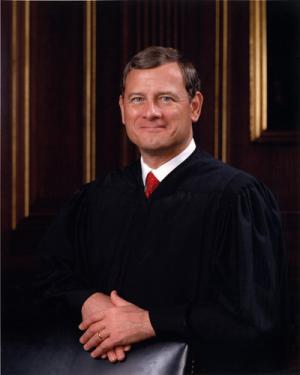
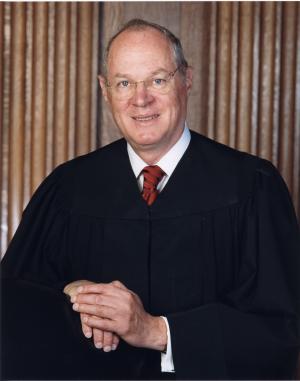
.jpg)
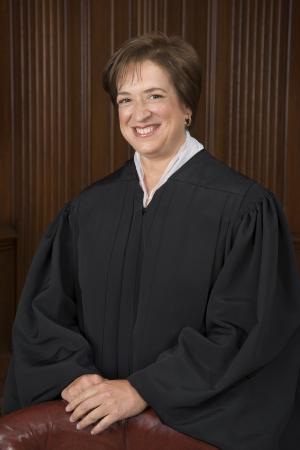
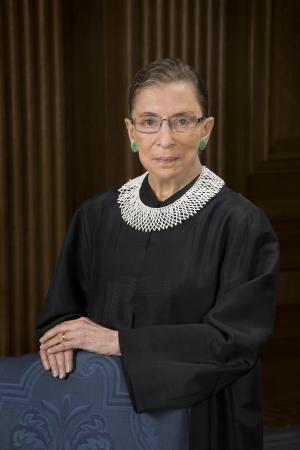
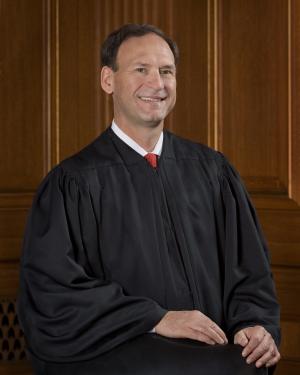
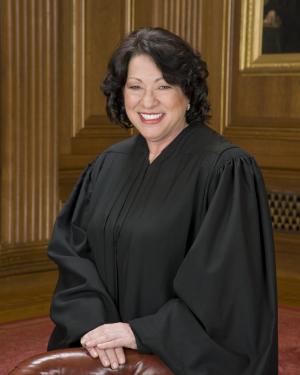
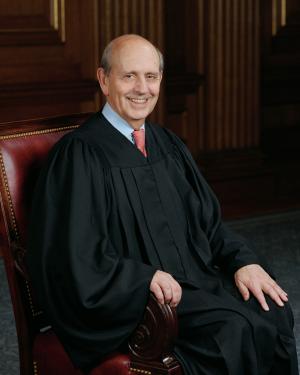
.jpg)